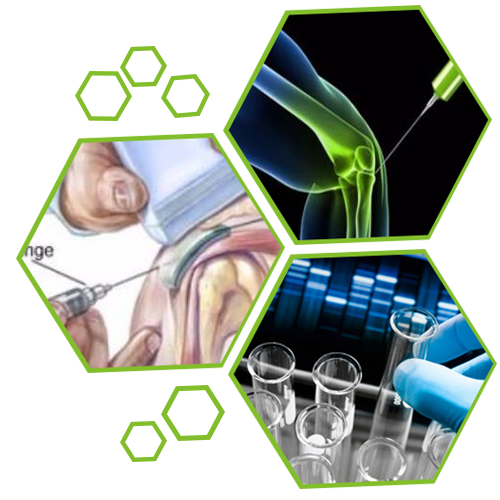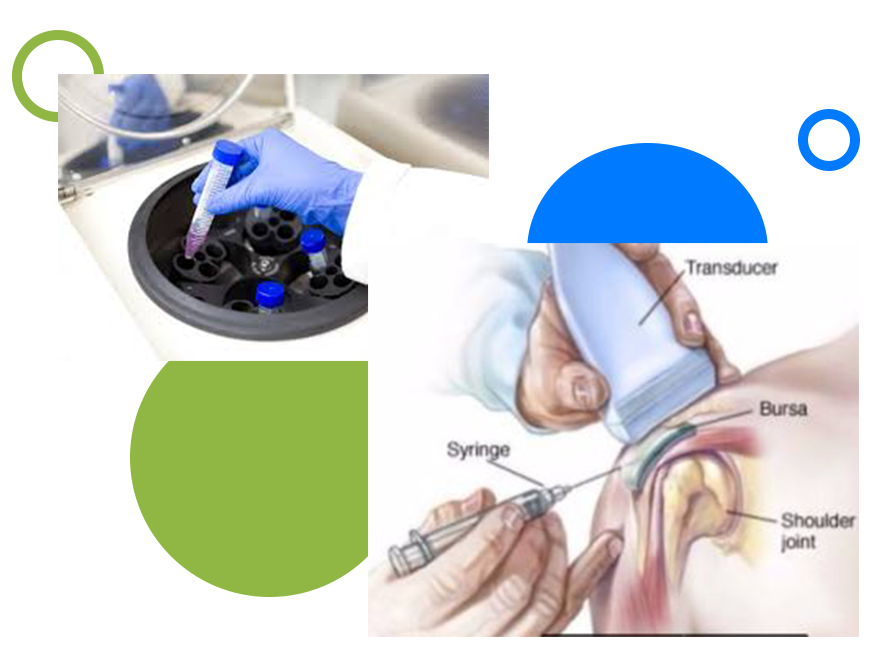Stem Cell/PRP

What is PRP (Platelet Rich Plasma)?
For many years now, surgeons have known that healing keenly depends on our platelets. These tiny blood components are rich in growth factors and are best known for forming blood clots during injuries to prevent exsanguination. When you injure an area like a ligament, cartilage, tendon or a muscle, platelets seep into the wound during the minuscule bleeding that normally occurs within. After they set up a blood clot to stop the bleeding, they start releasing growth factors to the area to coordinate a repair response. Over the first week, they act much like a time-release “pill” that secretes various growth factors at different times. These time-release growth factors do things like bring in stem cells and bring in new blood vessels to ensure that the body can get more blood to the area. As such, platelets are fertilizer to our bodies. Their growth factors help rev up the local repair response.
How can PRP/Stem Cell Research help you?
- Torn Ligament
- Joint Pain
- Pulled Muscles
- Arthritis
- Tendinitis
- Strains and Sprains
This is where PRP (Platelet-Rich Plasma) comes in. PRP is a mix of concentrated platelets and serum created when the doctor takes blood from a vein and places it in a special centrifuge to concentrate platelets (up to 10 times their normal concentration). Once prepared, the harnessed PRP is injected at the site of the injury or tear using an ultrasound-guided technique directing it to the problem.


Stem Cell Research May Be a
Solution for You!
While PRP therapy alone is generally good for helping things that may either heal on their own given enough time or are maybe stuck in the healing process and need a little “kick” to get things going towards resolution, combining PRP therapy with MSCs (mesenchymal stem cell) therapy will certainly supercharge the regeneration of new tissue in many patients. So to use a gardening metaphor, PRP is like adding additional fertilizer and water to the plant, and MSCs are like placing new seeds in the area and hiring a gardener. MSCs are capable of not only differentiating into the new tissue that is lost but also coordinating the repair and regenerative response of damaged tissue.
Due to investigatory research projects over the last few years, it has been increasingly evident that select adult stem cells have the capacity to participate in the repair and regeneration of damaged and/or diseased tissue in any biological specimen.
Stem cells, combined with PRP specifically, have been among the most studied for the treatment of a variety of conditions including wound healing, arthritic joint repair and other non-musculoskeletal tissue repair from core organs to skin and hair follicles. There is now abundant evidence regarding the efficacy and speed in which BMSC/PRP treatments repair injured tissue. Studies conducted by various national and international organizations complete with high-resolution imaging detailing the results are now available online.



